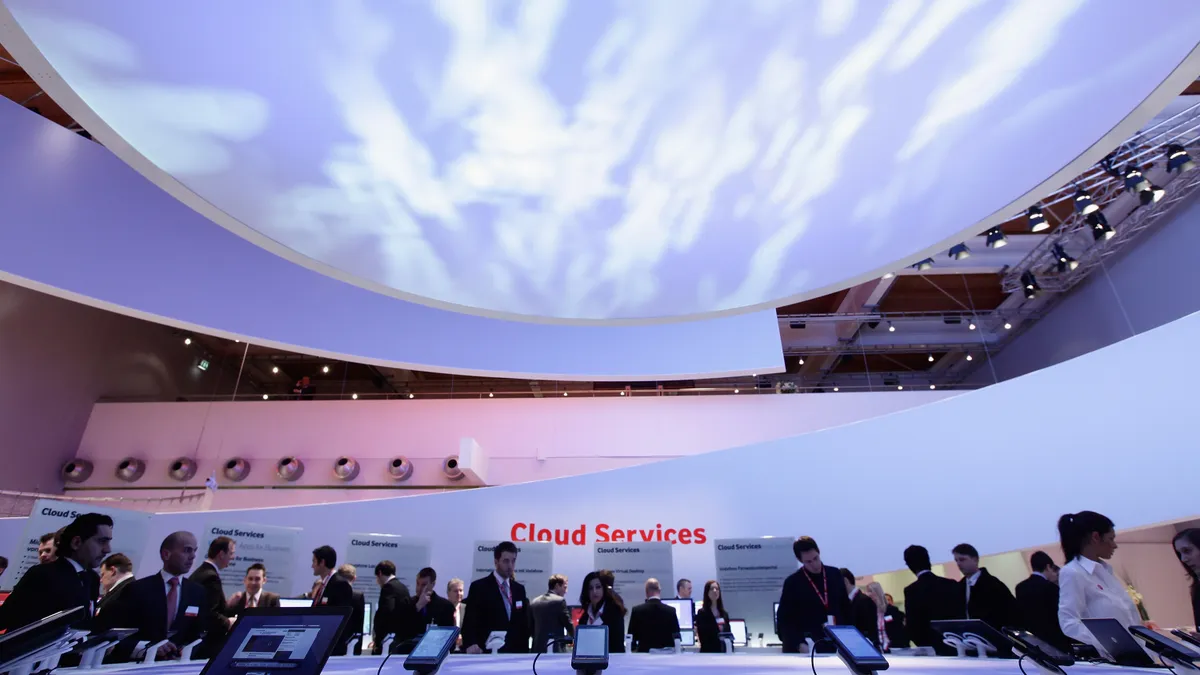Editor's note: The following is a guest article from David Smith, distinguished VP analyst and fellow at Gartner. He leads the research agenda for cloud computing and digital disruption.
"Cloud native" is growing in popularity as a term, popping up in more and more organizations' cloud strategies as a principle that drives cloud decision making. IT leaders are already investing in cloud initiatives for many reasons, including digital transformation.
As one of the top strategic technology trends identified for 2022, cloud-native platforms (CNPs) are expected to serve as the foundation for more than 95% of new digital initiatives by 2025, up from less than 40% today.
But, the confusion around the meaning and definition of cloud-native is very real. Some of these interpretations are contradictory even and there is considerable "cloud-native washing" that is attributable to vendors and users.
To take advantage of the cloud, organizations will need to thoroughly examine and define what cloud-native is (and is not). Here we explore some of the most common questions that will guide IT leaders to benefit from and adopt cloud-native where appropriate.
What is cloud native, and why is everyone so excited about it?
Cloud-native excitement is directly a result of excitement around cloud computing. Something is cloud native if it is created to leverage cloud characteristics. Those characteristics are: scalable and elastic, metered by use, service-based, ubiquitous by means of internet technologies, and shared.
The term "cloud native" is often used as an adjective. There can be cloud-native thinking, architecture, infrastructure, applications or operations, for example.
Cloud native is not just about technology. To achieve the full outcomes and benefits of cloud, you must operate in a cloud-native fashion using a self-service, dynamic, adaptive and elastic operating process in line with the capabilities of a true cloud service.
The confusion around cloud native is a result of multiple interpretations of the term becoming widely used. The two most common interpretations of the term are better described as either CSP native, where use of the capabilities native to the underlying cloud platform provided by the cloud service provider (CSP), or container native, where use of specific technologies related to containers is the focus.
The primary driver for cloud-native is a desire to "get the most out of cloud." Use cases tend to differ based on which interpretation organizations use. They generally include performance agility, portability and resiliency.
Gartner's interpretation of cloud native is something that optimally leverages or enables cloud characteristics. It does not require use of any specific technology or capability.
Is lift and shift the opposite of cloud native?
At a high level, yes. Cloud native is a popular and hyped concept because many organizations using cloud have not fully realized the benefits they expected from cloud.
For example, if a traditional application is migrated to cloud using a lift-and-shift approach, the application is unlikely to leverage cloud characteristics and deliver the full benefits of cloud. This is an example of an application that is not cloud-native.
In contrast, if the application is rewritten to take advantage of the cloud capabilities through the use of cloud-native interfaces, services and operating processes, then the application is more likely to deliver the expected cloud outcomes.
Similarly, operational aspects of cloud-native applications such as tools, platforms and processes require a new thinking as opposed to those in the non-cloud-native ecosystem.
By definition, rehosting (aka lift and shift) means that you are making no changes to your virtualized application and simply moving it elsewhere. So, while you may get some cloud benefits by taking a lift and shift approach, the possibility of optimally leveraging cloud characteristics is very small.
Lift and shift is a migration model and makes sense in some scenarios, such as complete cloud migrations during a data center closure. Cloud-native is much more than that.
What is the business value of cloud-native platforms (CNPs)?
Many organizations do not succeed with digital initiatives because they lack the necessary talent and expertise. They're disappointed with the simple rehosting of applications because of unpredictable or overly high costs.
CNPs are enabling such organizations to use the capabilities of the cloud to offset this talent shortage and deliver much faster on their digital initiatives. Two-thirds of organizations surveyed by Gartner report that they are using a cloud-native application architecture to build their platforms for digital business.
Consistent with the above definition, CNPs use the core capabilities of cloud computing to deliver faster time to value.
As one example, a major Indian bank recently built a solution using a CNP, with container, database and compute services. The CNP enabled the bank to build a portfolio of new digital financial services bringing advanced banking experiences to customers at scale, like account openings in six minutes and instant digital payments.
The bank used its provider's Kubernetes service to deploy a new microservices architecture to support the integration of savings, virtual debit card and credit card services. This enabled the bank's system to easily scale to over 3.5 million transactions in two months. The overall initiative increased customer satisfaction by 35% and reduced costs by 24%.
How do we assess vendor claims about cloud native?
Assess vendor claims about their cloud-native capabilities with skepticism. We all recognize that vendors use the latest popular buzzwords to sell their offerings, and cloud-native is just the latest example.
Expect vendors to describe their offerings as "cloud native" to promote them, regardless of how cloud-native their offerings actually may be.
Vendors have contributed to confusion on the topic by their use of multiple meanings. For example, some have made containers and Kubernetes synonymous with cloud native (in other words, container native), while some promote use of their native platform capabilities (in other words, CSP native).
This type of claim can be taken to an extreme — a claim that cloud-native doesn't even require cloud. It is possible to have containers and container-native approaches without cloud computing, but in order to be cloud-native, the basic cloud characteristics mentioned above must be leveraged or enabled — something very difficult to do without cloud computing.
The best that can be achieved is a type of cloud-inspired capability.
Cloud native is a concept that is not binary. Rather, it can be expressed in degrees or on a continuum. The more something aligns with core cloud characteristics, the more we consider it to be cloud-native and the more cloud-native outcomes can be enabled.
Focus on the outcomes you want from using cloud rather than focusing purely on whatever definition of cloud-native vendors are offering. The more your use cases align with the core cloud attributes, the more likely you are to recognize the full benefits of using cloud.





















